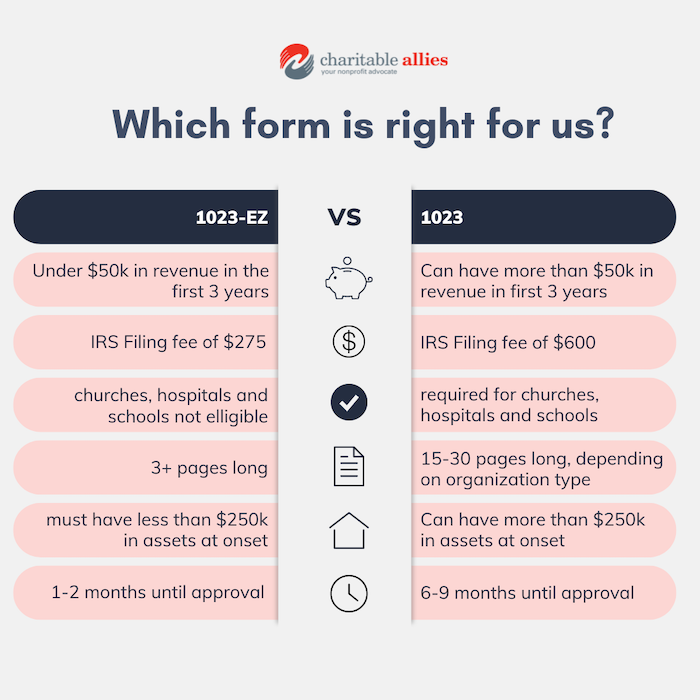
If you’re wondering about how to start an animal rescue center, you’ve come to the right place. Our legal team outlines the step-by-step process below. We’ve helped hundreds of nonprofits obtain 501c3 status and thrive, so if you’d like to learn more about getting our help in the process, reach out! Startup packages for nonprofits that include legal paperwork from incorporation to 501c3 status start at $1600.
How to Start an Animal Rescue Step One: Incorporating Your Animal Rescue
Starting an animal-related nonprofit requires several important steps to ensure your organization is legally recognized and can operate effectively. First, you’ll need to incorporate. Some states call this incorporation document the “Articles of Incorporation,” while others will call it “Certificate of Formation” or something similar. There are three things to consider in this first step:
- Make sure your “statement of purpose” (sometimes called purpose language or similar) accurately reflects that the nonprofit is dedicated to the rescue, rehabilitation, and/or rehoming of animals in need. It’s key that the language you use in this document is in-line with language your state authority and the IRS recognizes as charitable. If you don’t, it can be a barrier to getting 501c3 status.
- State waiting times vary wildly. We’ve categorized all 50 states below to give you an idea of their general timeline, but sometimes factors like being short staffed or having more registrations to review will cause longer wait times.
- Every State charges a fee to file the Articles of Incorporation. This can vary from as little as $8 to a few hundred dollars, especially if you opt for expedited processing.
How long will it take for my Animal Rescues’s Articles of Incorporation to be Approved?

Waiting times vary. Many states will list how long the wait times are on the website of the governmental body that reviews the documents, which could be a Secretary of State or Division of Corporations. Some states have an extra fee you can pay to further expedite your applications, but not all states offer this option. Again, state wait times vary depending on their volume of work, the time of year, and their staff, but we’ve created categories that are accurate in our experience with each state. Note that these processing times are for online submissions, not for submitting paperwork via mail or fax. In our experience, mail and fax increase the wait times in almost every state that allows either option.
Quickest Approval Time States (Approvals in 1 week or less): Alabama, Alaska, Arkansas, Colorado, Connecticut, Florida, Indiana, Iowa, Kansas, Kentucky, Louisiana, Maine, Massachusetts, Minnesota, Mississippi, Nebraska, Nevada, Oklahoma, Oregon, South Carolina, Tennessee, Utah, Washington, West Virginia.
Average Approval Time States (Approvals in 1-3 weeks): California, Washington D.C., Georgia, Hawaii, Idaho, Illinois, Michigan, Missouri, New Hampshire, North Carolina, Ohio, Pennsylvania, Rhode Island, South Dakota, Texas, Vermont, Virginia, Wisconsin, Wyoming.
Slowest Approval Time States (Approvals taking more than 3 weeks): Delaware, Maryland, Montana, New Jersey, New Mexico, New York, North Dakota.
States that Offer Expedited Service for an Extra Fee: California, Connecticut, Washington D.C., Delaware, Florida, Georgia, Hawaii, Idaho, Illinois, Kansas, Louisiana, Maine, Maryland, Michigan, Nevada, New Jersey, New York, North Carolina, South Dakota, Wisconsin.
What Kind of Information is Typically in Articles of Incorporation?
- Name of the organization
- Address
- Purpose of the organization
- Contact information and mailing information for the person who will be the registered agent
- If you will have members or not (Note: This is different from having board members. Most animal rescues don’t have members.)
These are the pieces of information we see most frequently, but each state is a little different. Some states even have requirements and rules around what you are allowed to name the nonprofit. Others have rules around having a “wet signature” with a pen rather than an e-signature on the document. We’re familiar with the rules and regulations with each state’s Articles of Incorporation or similar document, so if you’d like a legal team to complete the form for you, let us know! We have helped hundreds of people successfully start 501c3 nonprofit organizations.
Structuring the Animal Rescue: Creating a Board
Every nonprofit needs a board of directors. The board serves several important roles throughout the life of the nonprofit which can include:
- Voting on important matters like updates to the bylaws, changes to the executives’ salaries or making large purchases like a new building
- Holding leaders, such as an Executive Director, accountable to ensure they act with integrity, compassion and wisdom in overseeing the organization’s mission and operations
- Creating a strategic plan for the rescue to ensure there are straightforward goals in place to accomplish your mission
- Ensuring proper financial procedures and financial management are in place to keep nonprofit’s finances secure and ensure the long-term health of the organization
This list is far from exhaustive. There are different board officer roles like Board Chair or Secretary that come with extra responsibilities and permissions. We go into more detail about the duty of the entire board here. Choosing the right board members is crucial when you start an animal rescue center.
How to Start an Animal Rescue Step Two: Creating Bylaws and Other Corporate Documents
While your state is reviewing your Articles of Incorporation, the next step is to create corporate documents for your nonprofit, including bylaws and a conflict of interest policy.
Bylaws and Mission Statement
Bylaws are the rules that govern how your organization runs. This could include:
- When your fiscal year starts (most use January so their fiscal year is the calendar year)
- How the board is run, including how long board members will serve on the board, how often they meet, and how to remove a board member
- The duties of each board officer, including Treasurer, Board Chair and Secretary
- Your mission statement (detailed below)
In many nonprofit organizations’ bylaws, they include their mission statement. A mission statement clearly outlines the core purpose and goals of the organization. If you are associating formally with a larger national organization, check with the governing authority to see if they require specific language in your mission statement. Examples of mission statements can be found across the internet, so review the websites of reputable animal rescue centers to find examples within your area of focus. Mission statements typically cover broad objectives like rescuing animals, promoting animal welfare, and educating the public about responsible pet ownership. Your board will need to approve and officially adopt the bylaws, including the mission statement, at your 1st board meeting.
Conflict of Interest Policy and EIN
The conflict of interest policy outlines what a conflict of interest is, how to determine if there is a conflict present, and how to address it. Ideally, the conflict of interest policy is clear enough in defining the proper terms that you can identify potential conflicts easily. If a conflict is identified, the document will walk through the proper procedure to handle it to ensure the organization’s tax exempt status isn’t being put at risk. For example, if the executive director’s spouse serves on the board, there is a potential conflict of interest if the board needs to vote on that executive director’s salary. In that case, the spouse would recuse themself (or, not vote) to ensure the vote is done properly. When you start an animal rescue center, this kind of document can be incredibly helpful in navigating some of the IRS’s rules for nonprofit organizations.
You’ll also want to file for an EIN at this point. An EIN is a number the IRS assigns to your nonprofit and is important for ensuring your organization is set up properly and can legally hire staff and/or open a bank account to collect donations. There is no fee to obtain an EIN, and it is a filing with the IRS rather than a filing with your state. The EIN will also need to be on every donation acknowledgment you send when your nonprofit starts receiving donations.
How to Start an Animal Rescue Step Three: Filing for 501(c)(3) status
As long as they meet the IRS criteria for what defines a charitable organization, animal rescues can apply for tax-exempt status (also known as 501c3 status). If you’re approved for tax exempt status, you’ll receive a determination letter from the IRS. An official determination letter brings legitimacy to your organization and provides assurance for potential donors, grant funders and corporate sponsors. A determination letter is an official document from the IRS that confirms your animal rescue is a tax-exempt, 501(c)(3) organization. Often, vendors, donors, and potential funders will ask for this letter as proof that your organization is a legitimate, charitable entity. Many companies offer nonprofit discounts, but in order to obtain them, you’ll often need to show your determination letter as proof of tax exemption. Grant funders also often require your determination letter.
Form 1023 and Form 1023-EZ

To gain 501c3 status, there are two possible forms your animal rescue center could potentially complete: Form 1023 or Form 1023-EZ. Essentially, these are two different versions of the same form. The IRS has different qualifications for which types of organizations are allowed to file each form.
If you’re anticipating the nonprofit could bring in $50,000 or less in revenue each year in your first three years of operation, you could be eligible for Form 1023-EZ, which is a shorter, less expensive version of the form. Typically, the IRS takes 1-2 months to approve applications using Form 1023-EZ. The filing fee is $275.
If you already have funding lined up that is more than $50,000, you’ll need to file Form 1023. IRS Form 1023 can be overwhelming for those who are new to the process of filing it. The form includes detailed, narrative answers, a financial section, and multiple attachments. The IRS looks for certain language and information within the 1023 to ensure that your activities are charitable. Typically, approval takes anywhere between 6-9 months. The IRS regularly updates the wait times on their website. Sometimes, the IRS will come back to you with questions about your application, which can make the process take longer. Be wary of any service guaranteeing immediate approval of Form 1023. The IRS processing times are dependent upon multiple factors, including their workload, staffing, etc. The filing fee is $600.
If the prospect of filling out extensive IRS paperwork sounds overwhelming, reach out to us, and we’re happy to complete and file the paperwork to start an animal rescue center. We’ve helped plenty of nonprofits get their tax-exempt status nationwide. Packages that include all you need to start an animal rescue center start at $1600
What else should I consider when starting an animal rescue?

Every state is a little different when it comes to how it regulates nonprofits. Thus, if you want to start an animal rescue, it’s important to look into your specific state’s requirements.
Collecting Donations
You’ll want to check NASCO’s list to see if your state requires you to register to fundraise. This registration is called Charitable Solicitation Registration (CSR), and most states require it in order to start fundraising for your organization. Fundraising includes asking members of your community for donations, as well as holding any sort of event where people are asked to give financially. Some states allow you to complete your CSR requirements before you get your determination letter, while others do not.
Keep in mind, any donations you accept between the day you incorporate and the day you get your determination letter will still be tax-deductible as long as the time between those two dates is less than 27 months. So if you receive donations before getting your determination letter from the IRS, keep track of them! You’ll need to send donation acknowledgments that include all the necessary information.
Additional Documents to Consider
Some states require extra forms to obtain property tax exemption if you have a facility, or sales tax exemption if your organization will be purchasing items. We’re happy to help with these forms as well.
Building Agreements and Policies:
Building agreements and/or policies for these organizations ensure a safe and conducive environment for housing and caring for animals. These documents detail terms between the organization and property owners if the nonprofit doesn’t own the property. Or if the rescue has its own property, a policy for the facility’s use can help with safety and liability. Often, these documents cover maintenance, safety protocols, and facility usage. Clear building agreements or policies facilitate smooth operations by ensuring compliance with local regulations and promoting a positive reputation for responsible animal care.
Animal Admissions and Adoptions:
Animal admissions records are crucial for you to document essential information about each animal entering their care. These records, meticulously maintained, include details such as species, age, health status, and admission dates. By optimizing animal admissions documentation you demonstrate transparency, accountability, and a commitment to animal welfare, which resonates positively with potential adopters and supporters.
Adoption agreements finalize the placement of animals into forever homes, ensuring clarity and responsibility between adopters and rescues. These agreements detail adoption terms, fees, and post-adoption responsibilities. Optimizing adoption agreements improves the nonprofit’s presence by showcasing a commitment to responsible pet placement and encouraging trust among potential adopters. Good records and adoption agreements can also help prevent disputes and conflict over animals.
Partners:
Strategic partnerships are key to expanding the reach and impact of animal rescues. Partner agreements formalize collaborations with veterinary clinics, pet stores, community groups, and more. These agreements outline shared goals, responsibilities, and resources. By forming strategic collaborations, nonprofits can enhance their presence through organic connections and shared outreach efforts. This broader visibility can attract greater community engagement and support from partners, ultimately enriching the resources available to aid their mission.
One common example is having an agreement with a local veterinarian. If your rescue doesn’t employ a vet on staff, it’s a good idea to have a contract in place with a local veterinarian who can offer advice, help with spays/neuters, and provide medical care when needed. If you build great relationships with local vets, they will sometimes provide care for lower costs to animals in rescues.
Volunteers:
Volunteers are invaluable assets to 501c3 organizations, providing essential support and care for animals. Volunteer agreements establish expectations and roles for volunteers, optimizing their experience and contribution. These agreements can also protect your nonprofit from a costly lawsuit if something were to happen to a volunteer.
Some rescues have volunteers offer to foster animals to free up space in your facility and allow the animal to get more individualized attention and care. If your organization allows fostering, have a foster agreement in place with each foster home so expectations are clear.
Conclusion
Animal rescues can make a significant impact in their communities by providing care, rehabilitation, and adoption services to animals in need. If you’re looking for help with starting a dog, cat, or any other kind animal rescue, our compassionate legal team is happy to assist. Reach out to us for a free consultation.

